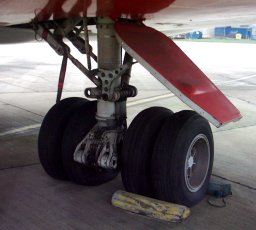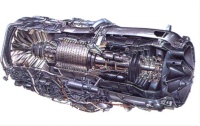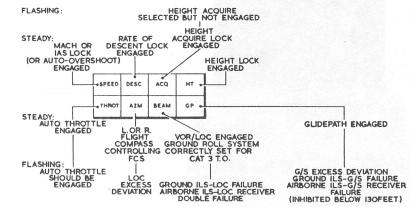
Technical
Fuselage
The fuselage of the Trident 3B is longer than that of the 1 series and 2E models, circular in section. It accommodates at most 180 passengers in six abreast seating configuration, however British Airways cabins were typically configured to carry 136. Internal cabin width is 3.44m and the height is 2.02m. Seating was predominantly six abreast with four abreast in first class and some carriers such as Channel fitted seven abreast in economy to achieve lower airfares. Conventional airliner galleys and toilets were also fitted, the specific layouts, some of which included several rows of rearward facing seats, depended on the specific variant and also the operator.
Structurally, the aircraft featured a great usage of redux-bonded components, the Hatfield based company having lead the way in advanced methods of metal airframe manufacture since the end of WWI, resulting in simpler structures with fewer fasters, thus reducing assembly complexity and the possibilities of fatigue and corrosion later in life.
Wings
The wings of the 3B are slightly larger than those of the previous models and have a greater angle of incidence. They are swept back at an angle of 35° and have an aspect ratio of 6.43. Both leading edge slats and trailing edge flaps are employed as high lift devices. These are simpler in concept and operation than those on the American Boeing 727-200 aircraft which is similar in many other respects. The 2E was the first series to employ the Küchemann style of wingtip, the 1E featuring a very squared off tip and thee 1C having a more conventional tip. The wings had to be modified with a butt-strap and replacement of the tips with more conventional ones, after the discovery of cracks on series 3B aircraft in the late 1970s.
Landing Gear
The Trident employed a highly unusual arrangement with the nose gear offset to the port side and retracting sideways to allow for extra space for avionic and blind landing equipment in the bay immediately ahead of the landing gear bay. The nose gear has two wheel on a common axle. The main gear pivot from a location in the wing, with two bogies and four wheels on a common axle on each bogie. They rotate through 90° and then the wheels retract into a space in the wing fairing.
 |
| Trident 3B main gear, photo: Neil Lomax |
Tailplane
The Trident possesses a T-tail with integral intakes for the central engine, APU and in the case of the 3B, the boost engine. The pod housing the boost engine was used to house additional fuel and the APU in previous models and the "fin tank" was also deleted on the 3B. The horizontal tail plane pivots roughly half way back along its chord and its incidence can be adjusted to trim the aircraft in pitch.
Engines
The three main Rolls Royce Spey 512 engines are of twin spool low bypass ratio design, using axial compressors and turbines. The combustion chambers are of the interlinked can-annular design and the engine features a complex shaped nozzle to integrate the hot and cold exhaust flows in an effort to reduce noise. The aircraft was very loud compared to today's twin high-bypass ratio engined aircraft like the Airbus A320.
Two engines are located in nacelles either side of the rear fuselage, while the third is located inside the rear fuselage, with an intake at the front of the vertical tail and an "s" duct leading to the first impeller stage. The Rolls Royce RB162-86 boost engine, unique to the Trident 3B, is mounted in a pod in the tail above the central engine. A small gas turbine engine is used as the APU (auxiliary power unit) to generate electricity on the ground and to start the other engines. This is located behind the central air intake, with its own small air intake immediately above it and its exhaust is the square opening on the side of the tail behind the central intake.
 |
 |
| Rolls Royce Spey | Rolls Royce RB162-86 |
Avionics
The Trident (and also the VC-10) were the first aircraft to have automatic blind landing devices. This system was revolutionary in the late 1960s as for the first time, airliners could land at airports with little or no visibility.
Smiths Auto-land system
The system is designed to "line-up" the aircraft for approach for landing. When it reaches a certain height above touch down, it automatically flares the aircraft (pitches up slightly so the rear wheels touch down first). The automatic landing device was triplicated for extra safety. The categories of autoland were based on the weather:
| Decision Height (ft) | Visibility (ft) | |
| Category 1 | 200 | 2,600 |
| Category 2 | 200 - 100 | 2,600 - 1,200 |
| Category 3A | 12 | 700 |
| Category 3B | Nil | 150 |
| Category 3C | Nil | Nil |
The system was first tested in March 1964. The first time it was used in service was in 1967 and by 1970 BEA had completed over 7,500 landings on aircraft carrying a total of 500,000 passengers.

The Trident used the Smith SEP5 autopilot system.